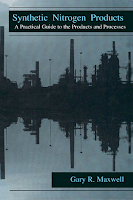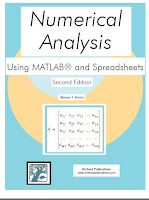Friday, March 25, 2011
|
0
comments
|
Read More
Search This Blog
Free Download | Client-Side Communication ActionScript Dictionary
Written By share_e on Friday, March 25, 2011 | Friday, March 25, 2011
Free Download | ActionScript Dictionary
Friday, March 25, 2011
|
0
comments
|
Read More
Free Download | Synthetic Nitrogen Products | pdf

Friday, March 25, 2011
|
0
comments
|
Read More
Free Download | Handbook of Materials for Product Design

Friday, March 25, 2011
|
0
comments
|
Read More
Free Download | Electrochemistry and Corrosion Science

Friday, March 25, 2011
|
0
comments
|
Read More
Free Download | Basic Concepts in Biochemistry
Friday, March 25, 2011
|
0
comments
|
Read More
Free Download | Modern Aspects of Electrochemistry
The electrical double layer has been dealt with in countless papers and in a number of reviews, including those published in previous volumes of the Modern Aspects of Electrochemistry series. 1–9 The experimental double layer data have been reported and commented on in several important works in which various theories of the structure of the double layer have been postulated.
Nevertheless, many double layer-related problems have not been solved yet, mainly because certain important parameters describing the interface cannot be measured. This applies to the electric permittivity, dipole moments, surface density, and other physical quantities that are influenced by the electric field at the interface. It is also often difficult to separate the electrostatic and specific interactions of the solvent and the adsorbate with the electrode. To acquire necessary knowledge about the metal/solution interface, different metals, solvents, and adsorbates have been studied.
Nevertheless, many double layer-related problems have not been solved yet, mainly because certain important parameters describing the interface cannot be measured. This applies to the electric permittivity, dipole moments, surface density, and other physical quantities that are influenced by the electric field at the interface. It is also often difficult to separate the electrostatic and specific interactions of the solvent and the adsorbate with the electrode. To acquire necessary knowledge about the metal/solution interface, different metals, solvents, and adsorbates have been studied.
Friday, March 25, 2011
|
0
comments
|
Read More
Free Download | College Chemistry
Friday, March 25, 2011
|
0
comments
|
Read More
Free Download | Power Electronics For Distributed Energy System
Written By share_e on Thursday, March 24, 2011 | Thursday, March 24, 2011
Thursday, March 24, 2011
|
0
comments
|
Read More
Free Download | The New Cognitive Neurosciences Second Edition
Thursday, March 24, 2011
|
0
comments
|
Read More
Free Download | Handbook of Biomedical Image Analysis
Thursday, March 24, 2011
|
0
comments
|
Read More
Free Download | Genomics and Proteomics Engineering in Medicine and Biology
Thursday, March 24, 2011
|
0
comments
|
Read More
Free Download | Molecular and Cellular Biology of Neuroprotection in the CNS
Thursday, March 24, 2011
|
0
comments
|
Read More
Free Download | Comprehensive Enzyme Kinetics
Thursday, March 24, 2011
|
0
comments
|
Read More
Free Download | WordPress for Business Bloggers
Thursday, March 24, 2011
|
0
comments
|
Read More
Free Download | Numerical Analysis Using MATLAB® and Spreadsheets
Numerical analysis is the branch of mathematics that is used to find approximations to difficult problems such as finding the roots of non-linear equations, integration involving complex expressions and solving differential equations for which analytical solutions do not exist. It is applied to a wide variety of disciplines such as business, all fields of engineering, computer science, education, geology, meteorology, and others. Years ago, high-speed computers did not exist, and if they did, the largest corporations could only afford them; consequently, the manual computation required lots of time and hard work. But now that computers have become indispensable for research work in science, engineering and other fields, numerical analysis has become a much easier and more pleasant task.
Thursday, March 24, 2011
|
0
comments
|
Read More
Free Download | Power Electronics Handbook
Thursday, March 24, 2011
|
0
comments
|
Read More
Free Download | Photoshop CS All-in-One Desk Reference for Dummies
Written By share_e on Wednesday, March 23, 2011 | Wednesday, March 23, 2011
Wednesday, March 23, 2011
|
0
comments
|
Read More
Free Download | Mac For Dummies
Wednesday, March 23, 2011
|
0
comments
|
Read More
Free Download | BEA WebLogic Server 8 For Dummies | pdf
Wednesday, March 23, 2011
|
0
comments
|
Read More
Free Download | Crystal Report 10 For Dummies
Wednesday, March 23, 2011
|
0
comments
|
Read More
Free Download | Mac OS X Panther Timesaving Techniques For Dummies
Wednesday, March 23, 2011
|
0
comments
|
Read More
Free Download | Firewalls For Dummies
Wednesday, March 23, 2011
|
0
comments
|
Read More
Free Download | Open-Source Robotics and Process Control Cookbook
Wednesday, March 23, 2011
|
0
comments
|
Read More
Free Download | Network Control And Engineering For Qos, Security And Mobility, III
Wednesday, March 23, 2011
|
0
comments
|
Read More
Free Download | Model Predictive Control Toolbox For Use with MATLAB
Wednesday, March 23, 2011
|
0
comments
|
Read More
Free Download | IEEE Guide For Control Of Hydroelectric Power Plants
IEEE Standards documents are developed within the Technical Committees of the IEEE Societies and the Standards Coordinating Committees of the IEEE Standards Board. Members of the committees serve voluntarily and without compensation. They are not necessarily members of the Institute. The standards developed within IEEE represent a consensus of the broad expertise on the subject within the Institute as well as those activities outside of IEEE which have expressed an interest in participating in the development of the standard. Use of an IEEE Standard is wholly voluntary. The existence of an IEEE Standard does not imply that there are no other ways to produce, test, measure, purchase, market, or provide other goods and services related to the scope of the IEEE Standard.
Wednesday, March 23, 2011
|
0
comments
|
Read More
Free Download | Fuzzy Expert Systems And Fuzzy Reasoning
Fuzzy Expert Systems And Fuzzy Reasoning pdf | Free Download | In this book, we will explore the emulation of human thought, capable of dealing with uncertainties, ambiguities, and contradictions.We agree with Anderson (1993) that much human thought can be expressed in rules (Anderson, 1993). To handle uncertainties, ambiguities, and contradictions, we will use fuzzy systems techniques, implemented by a fuzzy expert system. We supply the fuzzy expert system language FLOPS with this book, so that the readers can actually use our supplied example programs and write their own programs. An overwhelmingly important fact about human reasoning is that it is not a static process. Data are gathered; some preliminary hypotheses are advanced and tested; some of these may be rejected, and new hypotheses advanced; more data may be required, until finally some conclusion is reached. A computer program to emulate reasoning must proceed similarly. Unfortunately, in much mathematical description of the thought process the dynamic nature is lost. We cannot afford to make this error. Expert systems are computer programs, designed to make available some of the skills of an expert to nonexperts. Since such programs attempt to emulate in some way an expert’s thinking patterns, it is natural that the first work here was done in Artificial Intelligence (AI) circles. Among the first expert systems were the 1965 Dendral programs (Feigenbaum and Buchanan, 1993), which determined molecular structure from mass spectrometer data; R1 (McDermott, 1980) used to configure computer systems; and MYCIN (Shortliffe, 1976) for medical diagnosis. Since the middle 1960s there have been many expert systems created for fields ranging from space shuttle operations through intensive-care-unit patient alarm systems to financial decision making.
Wednesday, March 23, 2011
|
0
comments
|
Read More
Free Download | Fuzzy Control Systems Design And Analysis
Wednesday, March 23, 2011
|
0
comments
|
Read More
Free Download | Foundations of Neural Networks, Fuzzy Systems, and Knowledge Engineering
 |
| Buy Hardcover ($17.37) |
Wednesday, March 23, 2011
|
0
comments
|
Read More
Free Download | Essentials of Process Control
 |
| Buy Hardcover ($93.95) |
Wednesday, March 23, 2011
|
0
comments
|
Read More
Free Download | Design Of Analog Fuzzy Logic Controllers In CMOS Technologies
Wednesday, March 23, 2011
|
0
comments
|
Read More
Free Download | Classical Feedback Control With Matlab
Wednesday, March 23, 2011
|
0
comments
|
Read More
Free Download | Automating Manufacturing Systems with PLCs
Wednesday, March 23, 2011
|
0
comments
|
Read More
Free Download | Ham Radio For Dummies
Written By share_e on Tuesday, March 22, 2011 | Tuesday, March 22, 2011
Amateur or ham radio has been around for nearly a century. In that time, it’s grown, branched, morphed, and amplified itself into a worldwide community of licensed hams tickling the airwaves with every conceivable means of communications technology. Its practitioners range in age from preschoolers to septuagenarians. Ham radio’s siren call attracts those who have never held a microphone as well as deep technical experts who grew up with a soldering iron and computer. You may have come across ham radio in any number of ways: in movies such as Frequency or Contact, in books (the comic book hero TinTin is a ham), from seeing them in action performing emergency communications services, or maybe from a friend or relative who enjoys the hobby. Interestingly enough, ham radio has room for all of these activities. Yes, even a mad scientist or two are in the ham ranks. Most, however, are just like you. The storied vision finds the ham bent over a glowing radio, surrounded by all manner of electronic gadgets and flicking meters, tapping out messages on a telegraph key or speaking into a large, round, silvery microphone.
Tuesday, March 22, 2011
|
0
comments
|
Read More
Free Download | TI-83 Plus Graphing Calculator For Dummies
You won’t be given a problem to solve and then be told how to use the calculator to solve that particular problem. Instead, you’re given the steps needed to get the calculator to perform a particular task, such as constructing a histogram. This book is designed so that you do not have to read it from cover to cover.
You don’t even have to start reading at the beginning of a chapter. When you want to know how to get the calculator to do something, just start reading at the beginning of the appropriate section. The Index and Table Of Contents should help you find whatever you’re looking for.
Tuesday, March 22, 2011
|
0
comments
|
Read More
Free Download | Windows XP For Dummies
Tuesday, March 22, 2011
|
0
comments
|
Read More
Free Download | GPS For Dummies
Tuesday, March 22, 2011
|
0
comments
|
Read More
Free Download | C++ For Dummies
Tuesday, March 22, 2011
|
0
comments
|
Read More
Subscribe to:
Posts
(
Atom
)



























